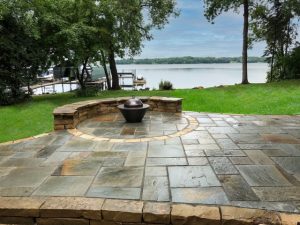Oak anthracnose is a fungal disease that infects oak trees, in particular the White oak. The fungus that causes it is apiognomonia quercinia. Each year, the plants that were infected the year previous will spread the spores from rain and moisture that gets splashed in the spring to new growth.
How Can You Spot it?
Early in the season, the immature leaves start to show infection, the disease will present itself as brown and dead looking edges of the leaves, with necrotic spots on the veins of the leaves themselves. Often what will happen is there will be a distinct separation between healthy and infected tissue on the leaf. As a leaf gets more and more infected, it will start looking misshapen and will curl in on itself. Mature leaves resist infection better than immature, but can still get infected. They will have small, brown spots, and tend to show the infection during the summer. When a tree is severely infected it can lose all its foliage, and there could be dieback of the branches as well.
Difference Between Oak Anthracnose and Oak Wilt
These two diseases are often confused, but there are some differences to help tell them apart. For one, anthracnose usually attacks white oak, and oak wilt generally attacks red oak. Also, anthracnose is signified by its splotches spread around a leaf. Wilt will cause large brown spots that sometimes combine into even larger spots. Anthracnose also generally infects the lower branches on the inside because it thrives in higher humidity levels. Oak wilt tends to stick with the extremities in the upper part of the tree.
How Devastating Is It?
Luckily, while it looks ugly, oak anthracnose will not cause any permanent damage to previously healthy and established trees. To control it, you must water, mulch, and use good sanitation. Make sure to rake leaves from the area, and prune any dead or dying branches, but only when it’s dry. These actions will help prevent the spread of infection. The best time to prune is from April to June, since the wounds inflicted by pruning can attract Nitidulid beetles, which can spread oak wilt. You can also use a fungicide to help protect new growth in the spring.
If you suspect trees on your Minnesota property have been infected by oak anthracnose, then follow this handy guide to identify it and to help prevent the spread of infection.

